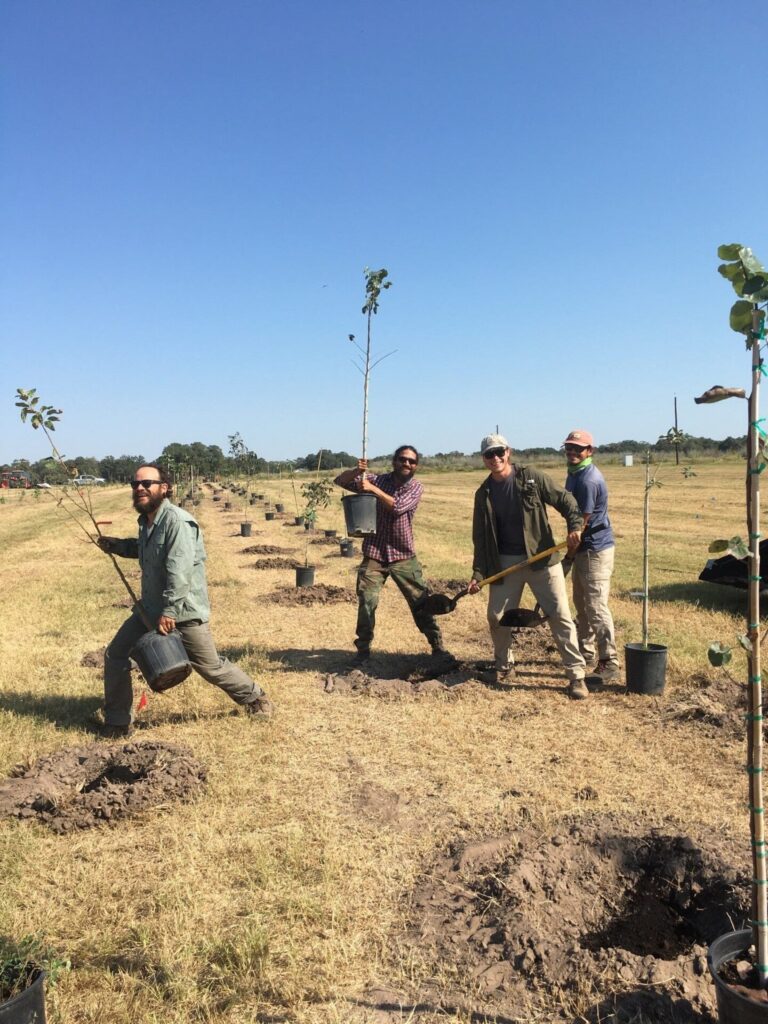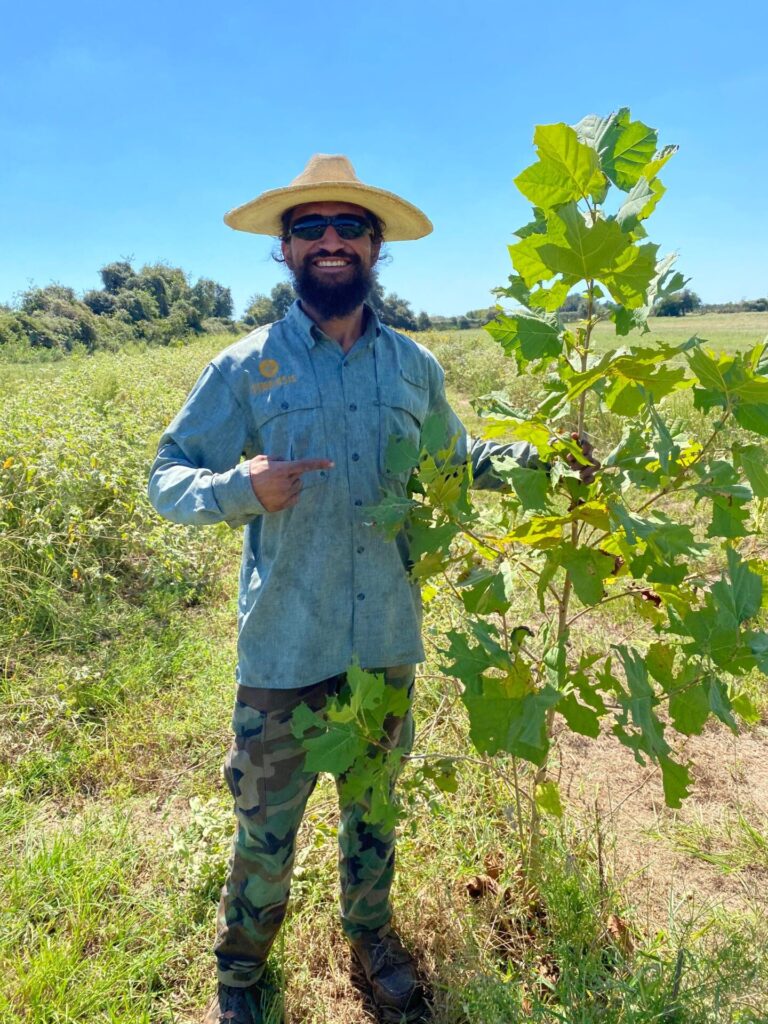Our Client Named This Project Arborgasm
In the heart of Texas, a former olive farm is getting a fresh start. This 78-acre piece of land, once home to thousands of olive trees, is about to transform into a vibrant regenerative agriculture system. The journey begins with planting over 3,000 trees, aimed at restoring the environment and promoting maximum biodiversity. These first phases are experimental, laying the ground work for future phases and giving us valuable research into what really works best in this specific context. Plants that survive will be used as propagation stock for future phases and eventually offered to the public.

The Story of the Land
This land was not always a failed olive monoculture. Once, it thrived as a Central Texas Blackland Prairie forest, rich with oak trees and diverse wildlife. However, an engineer decided to turn this beautiful area into an olive orchard about ten years ago. The native forest was bulldozed, the trees were burned and the land was reshaped to fit the new vision. Unfortunately, the olive trees struggled against harsh weather and repeated freezes, leading to a decline in their health and numbers. This lead to the project being abandoned.
Hopefully others can learn from this that planting trees in Texas can carry a high risk factor due to our variable weather patterns including extended heat and drought cycles but also periods of sub freezing whether and ice storms. If you succeed in getting the trees you’ve planted established you may experience an Arborgasm…
Now, less than a thousand olive trees remain out of the 30,000 originally planted. The sandy soil, once abused and neglected, is far from ideal for farming. The challenge ahead is to rebuild this land’s soil and diversity.

A New Approach: Regenerative Agriculture
The goals are clear: to maximize biodiversity, heal the soil, provide ideal conditions for livestock to be rotationally grazed and teach Texans about regenerative agriculture. Our methods focus on restoring the soil with organic mineral and biological amendments, encouraging a healthy ecosystem through biodiversity and beneficial livestock integration. It’s not just about planting trees; it’s about nurturing the entire environment and learning from the process of experimentation.
Key Steps in the Process
- Improving Soil Quality: Sandy soil can be tough, but it can be enriched over time. Adding organic matter, biochar, minerals, fungal and bacterial inoculants while using cover crops and rotational grazing help build a thriving soil ecosystem. Here’s another article going over these principles in more detail: How To Bring A Pasture Back From Death By Overgrazing In 8 Simple Steps.
- Diverse Planting: Instead of monoculture, which failed with the olives, a variety of trees will be planted. This includes Pecans, plums, pears, pomegranates, figs, apples, oaks, loblolly pine, eastern red cedar, and even elderberries but that’s just a fraction of the list! Each type of tree plays a role in creating a balanced environment. One of our suppliers for fruit trees on this project is Bob Wells Nursery.
- Water Management: With existing irrigation systems, watering newly planted trees will be efficient. Consistent watering is essential for establishment and survival when planting trees in Texas. Beyond irrigating, we are paying special attention to improving the soils ability to infiltrate rainwater and store it for the trees to access as needed. Spent mushroom blocks and fresh wood chips are being used to mulch the trees so they can minimize loss of available water to evaporation around the base of the tree while jump starting the soil building process.
The Vision for the Future
Jason Elder, who has invited us to work on this project, is passionate about trees. Inspired by his love for nature and healthy living, he envisions a landscape filled with nutrient-dense food sources, benefiting both humans and wildlife. His goal is to create a space where cattle can graze on rich grass while trees provide shelter and food.
This project is not just about planting trees in Texas; it’s about changing mindsets. Jason faces the challenge of persuading his family and other racnhers in Texas, who have farmed the traditional way for generations, to embrace these new ideas. Leading by example, he hopes to show the benefits of a diverse and sustainable approach.

Conclusion: A Journey of Growth
Planting 3,000 trees in Texas is more than just a restoration effort; it’s a promise for a better future. As the project unfolds, it will serve as a model for sustainable farming/ regenerative agriculture practices in the region. The transformation of this land will not only help regenerate the soil but also inspire others to rethink their approach to agriculture.
Stay tuned for updates on this incredible journey, including the next steps and the changes in the land!

